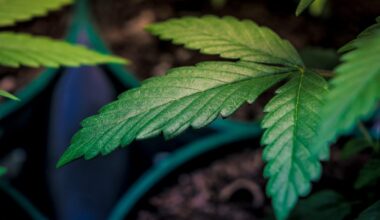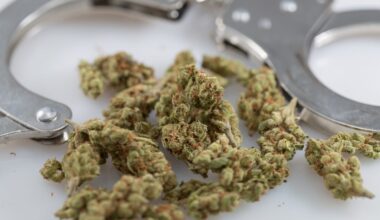The marijuana technology company Weedmaps released a satirical ad on Monday about a man dressed as broccoli who’s going through an identity crisis because people have come to associate the vegetable with cannabis.
The ad is a commentary on the censorship that marijuana businesses continue to face on social media and mainstream advertising, forcing people to use emojis like broccoli, maple leafs and literal pots to talk about cannabis.
Weedmaps says the timing of the release is intentional, pegged to the Super Bowl, which is one of the most coveted events for advertising opportunities that regularly features alcohol brands. Just like when CBS rejected a cannabis-related ad in 2019, Weedmaps said it reached out about running their own ad this year, and “the network did decline the request,” according to a press release.
“I’m an icon,” the character named Brock Ollie says in the ad. “But since we can’t talk about cannabis publicly, my likeness is being used as a safe substance.”
After going through a typical work day where people jokingly stereotype the broccoli—like assuming he’s getting high when he’s just going to a finance meeting in one scene—the character meets up with a couple other emoji icons that are sometimes used as stand-ins for marijuana on social media.
“It’s taking over my life,” he complains. “Cannabis is here to stay and that’s great. But can we just call it what it is?”
#SaveBrockOllie 🥦 https://t.co/l7I9QN15jO
— Weedmaps (@weedmaps) February 7, 2022
While leaf, broccoli and tree icons are often used to represent marijuana, the Drug Enforcement Administration (DEA) recently put out a report that raised questions about its drug culture literacy, with certain dubious claims about the types of emoji substitutes that it says young people are using for illicit drugs.
The Weedmaps ad’s release is meant to coincide with the Super Bowl, but Weedmaps stressed that advertising restrictions are widely enforced, limiting businesses that are lawfully operating in the growing number of states that have legalized cannabis.
“Despite three quarters of the country having legalized cannabis and the bipartisan enthusiasm we continue to see in support for change at the federal level, the industry continues to face roadblocks that inhibit competition in the legal market and stifle opportunities to educate,” Weedmaps CEO Chris Beals, said.
“There’s an irony in the fact that the biggest night for advertising will feature an array of consumer brands in regulated industries, from beverage alcohol to sports betting, yet legal cannabis retailers, brands and businesses have been boxed out,” he said.
The call to action at the end of the video is a simple statement: “Cannabis is here. Let’s talk about it.”
Beals said that the advertising challenges that the industry faces “are simply one part of a much larger issue.”
“Objective and reliable information about cannabis is integral to the sustained growth of this industry,” he said. “The deficiency of such information and the current limitations that hinder cannabis education continue to negatively impact other areas, such as medical research, and it’s time we begin to address them.”
Anecdotally, marijuana brands and influencers commonly complain that their accounts are shut down by platforms like Instagram, even in cases where they’re not directly selling or promoting the sale of cannabis.
Advocates also found it hypocritical that Twitter partnered with a federal drug agency last year to promote substance misuse treatment resources when users of the social media platform search for “marijuana” or certain other substance-related keywords—but no such health warning appears with results for alcohol-connected terms.
Photo courtesy of YouTube/Weedmaps.
Medical Disclaimer:
The information provided in these blog posts is intended for general informational and educational purposes only. It is not a substitute for professional medical advice, diagnosis, or treatment. Always seek the advice of your physician or other qualified healthcare provider with any questions you may have regarding a medical condition. The use of any information provided in these blog posts is solely at your own risk. The authors and the website do not recommend or endorse any specific products, treatments, or procedures mentioned. Reliance on any information in these blog posts is solely at your own discretion.







